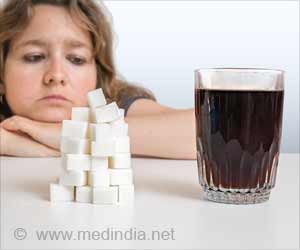Both diet and exercise provide profound benefits to reduce the risk of diabetes. Both those who restrict calories and those who exercise benefit from weight loss
Saint Louis, researcher and member of Washington University team of scientists induces a query: Which works best in fighting the risk factors for diabetes – exercise or diet?
It's a toss up – answers Louis, who is currently involved in new research, a part of longevity study funded by NIH, examining whether a calorie-restrictive diet can extend lifespan of people who are under the mercy of diabetes."Both diet and exercise provide profound benefits to reduce the risk of diabetes. Both those who restrict calories and those who exercise benefit from weight loss," says Edward Weiss, Ph.D., lead author and assistant professor of nutrition and dietetics at Saint Louis University's Doisy College of Health Sciences.
"We thought exercise probably would produce greater benefits. But both of these are providing beneficial health improvements."
Weiss said the scientists looked at markers for developing diabetes because the disease is one of the main causes of premature death.
The researchers studied 50 to 60 year olds whose body mass index was between 23 and 30. That places them at the high end of normal weight or overweight, but not obese.
"People weren't way out of whack in terms of their body composition," Weiss says.
Advertisement
All participants had their insulin action and glucose tolerance, which both are markers for diabetes, evaluated at the beginning and end of the study. In addition, their weight, body composition and energy intake were measured at the beginning of the study and at one, three, six, nine and 12-month intervals.
Advertisement
Their goal was to reduce their calorie consumption by 16 percent the first three months and by 20 percent for the next nine. Their progress was tracked by keeping food diaries and the doubly-labeled water test, which is the gold standard in measuring the rate of a person's metabolism or the amount of energy expended.
Exercisers -– or those who expended more calories -- had the goal of burning 16 percent more calories for the first three months, increasing to 20 percent the next nine months. They met weekly with an exercise trainer and had open access to a fitness center. To meet their goal, they exercised for between an hour and 90 minutes a day and tracked their progress on a heart rate monitor that recorded calories burned.
"As they got fit, the treadmill could be speeded up. They could exercise on a steeper grade and they could burn more calories," Weiss says. "All of them learned very quickly the most efficient way to burn more calories was through cardio. If they pushed themselves, the numbers added up quickly."
While those in the control group could request general advice on eating a healthy diet and free passes to a yoga class, few did, Weiss says.
Glucose tolerance and insulin levels improved at about the same levels in both the dieters and exercisers. They also lost weight. Those in the control group didn't lose weight or have changes to their glucose tolerance or insulin levels.
"The next step is to determine what happens when you exercise and diet to lose weight," Weiss says. "We don't know if the combination is going to provide greater benefits."
Source-Eurekalert
SRI











